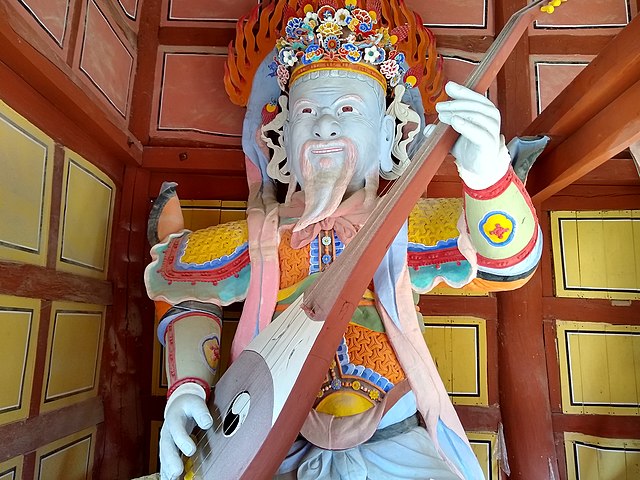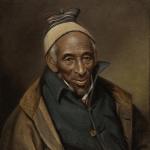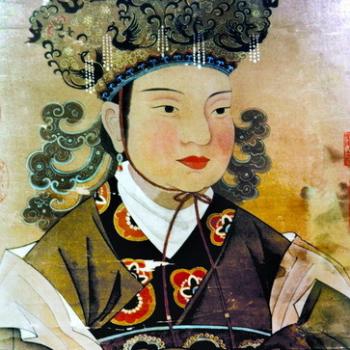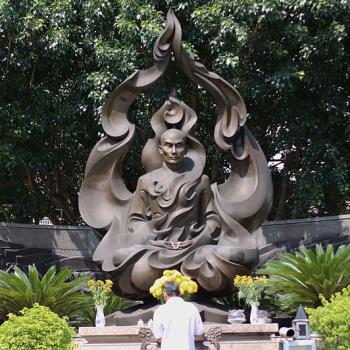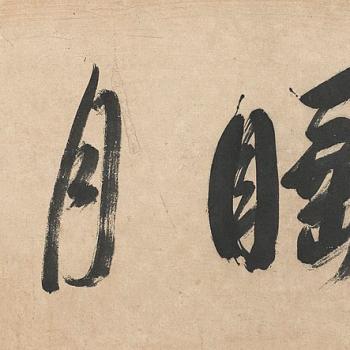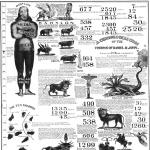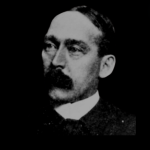The story of Wonhyo (617-686 CE), who was among the most important philosophers of east Asian Buddhism, begins with a folk tale. When Wonhyo was a young monk, he and his friend Uisang decided to go to China to study Buddhism. They lived on the Korean Peninsula in the kingdom of Silla, and to reach China they walked through forests and villages toward a port on the Yellow Sea. One night they were caught in a pounding rainstorm. They stumbled through the mud and dark looking for shelter. To their relief they found a small stone building, possibly a toolshed. It was utterly dark inside, and the monks had no wood to build a fire, but at least they were out of the pelting rain. The thirsty Wonhyo felt around and found a gourd filled with rainwater. He drank his fill.
In the morning light, however, Wonhyo saw that the shelter was a tomb and the gourd was part of a skull. Wonhyo then had a powerful realization of how his mind created his perception of reality. He said, “The three worlds are only mind, and all phenomena arise from the mind, consciousness. If the truth is present in the mind, how could it be found outside of the mind!” He decided he had no need to go to China. Uisang (625–702), who also made significant contributions to Korean Buddhism, went on alone to China, and Wonhyo returned to Silla.
When Wonhyo returned to Silla he devoted himself to living among laypeople to teach Buddhism. He traveled from village to village carrying a gayageum, a traditional Korean musical instrument similar to a zither. He played the gayageum and led people in song and dance as an expression of harmony in everyday life. He reverted to being a layman, According to a story with many variations, this was because of an affair with a princess of Silla who became enamored of Wonhyo when she heard him speak. Later in his life Wonhyo married and had a son, Seol Chong, who became one of Korea’s eminent scholars. Wonhyo’s unconventional life made him a folk hero of Korea as well as a historical figure.
Wonhyo’s Interpenetrated Buddhism
Buddhism had reached what is now Korea in 372 CE, when a Chinese monk arrived bearing sutras and images of the Buddha. By the 7th century, when Wonhyo and Uisang began their journey to China, it was common for monks of the Korean Peninsula to spend some time in China studying with the Chinese masters. And by that time several distinctive schools of Buddhism were emerging in China, each with its own doctrines and practices. For example, in China Uisang studied with Zhiyan, a patriarch of the Huayan school of Buddhism. Other schools of the time included Pure Land, Tiantai, and early Chan, better known in the West by its Japanese name, Zen. Although these shared a basic doctrinal foundation, there were significant differences among them. Monks were coming back to the Korean Peninsula with very different versions of Buddhism. This was causing considerable dissension among the monks.
Wonhyo surveyed the schools of Buddhism that had been transmitted to Korea. He systematically presented these diverse schools in a larger framework of Buddhist teaching to resolve their differences. The result is called Tongbulgyo or T’ong pulgyo, which means “interpenetrated Buddhism.” In Wonhyo’s view, the differing positions of various schools can be understood as partial views of the whole reality, seen from their respective perspectives. Therefore, even though doctrines may differ they are all self-consistent parts of the one integrated whole. Korean Buddhism on the whole adopted Wonhyo’s perspective to reduce sectarian conflict.
Wonhyo’s One Mind
One Mind is at the center of much of Wonhyo’s work. To explain as simply as I can, the One Mind consists of the minds of all sentient beings and also the ground from which they manfest. One Mind is a complex teaching that had been proposed in earlier Buddhist commentaries in China, but Wonhyo took the teaching further and explained it in a way that, once again, reconciled different Buddhist philosophical schools. Wonhyo’s commentaries on One Mind influenced Buddhism in China and, eventually, all of East Asia. Wonhyo said that if people understood the One Mind, they would realize that religious differences are just misguided labels that cause strife and misunderstanding.
Wonhyo remains less well known in the West than many Chinese and Japanese masters. This is a shame, because I suspect he has much to teach us still. For more about Wonhyo and the One Mind teachings in China and elsewhere, see my book The Circle of the Way: A Concise History of Zen from the Buddha to the Modern World.
